
[209] Limosa limosa, Black-tailed Godwit
Introduction
Limosa limosa, the Black-tailed Godwit, is a relatively large wading bird, commonly seen at wetland sites throughout the year.
Taxonomy
Kingdom – Animals
Phylum – Chordates
Class – Aves (Birds)
Order – Charadriformes (Waders, Gulls and Auks)
Suborder – Scolopaci (Only one family)
Family – Scolopacidae (Including sandpipers, Turnstone, Curlew, Snipe, and Phalaropes.)
Subfamily – Tringinae
Genus – Limosa (Godwits)
Scientific Name – Limosa limosa
Name
The origins of the word godwit, which dates from about 1400, are unclear. It could be associated with Middle English ‘good wight’ (good creature) but is probably onomatopoeic from its call.
Limosa, from the Latin limus, means muddy
Description
The four species of Limosa are geographical separate and two of them are restricted to North America.
For identification you can forget anything about the tail for a start. Limosa limosa is one of few wading birds that we see in both breeding and non-breeding plumages – and some stages in-between. Not surprisingly, the breeding version is more colourful.
Apart from the Curlew, godwits are the largest waders seen in Britain. Their long bills are from yellowish to pink, always with a dark pointed tip. Winter plumage is mottle brownish grey, with brighter orange-brown colours of the neck and breast in summer.
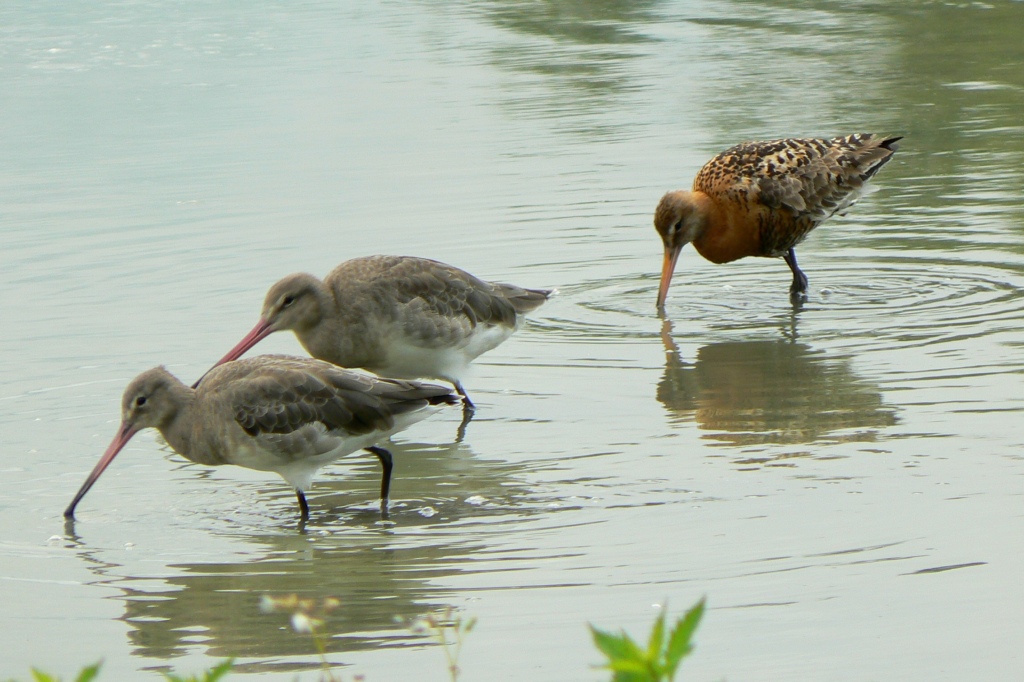


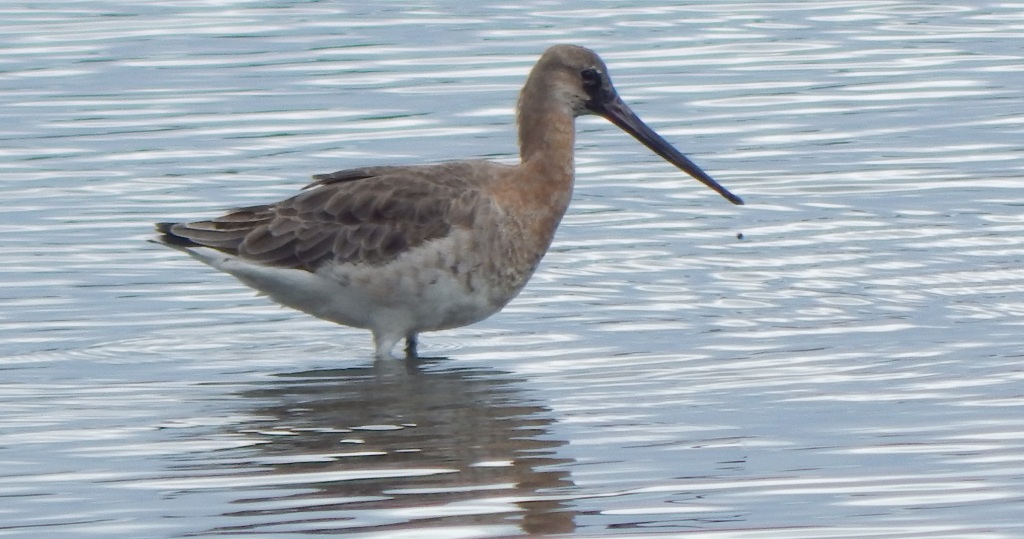
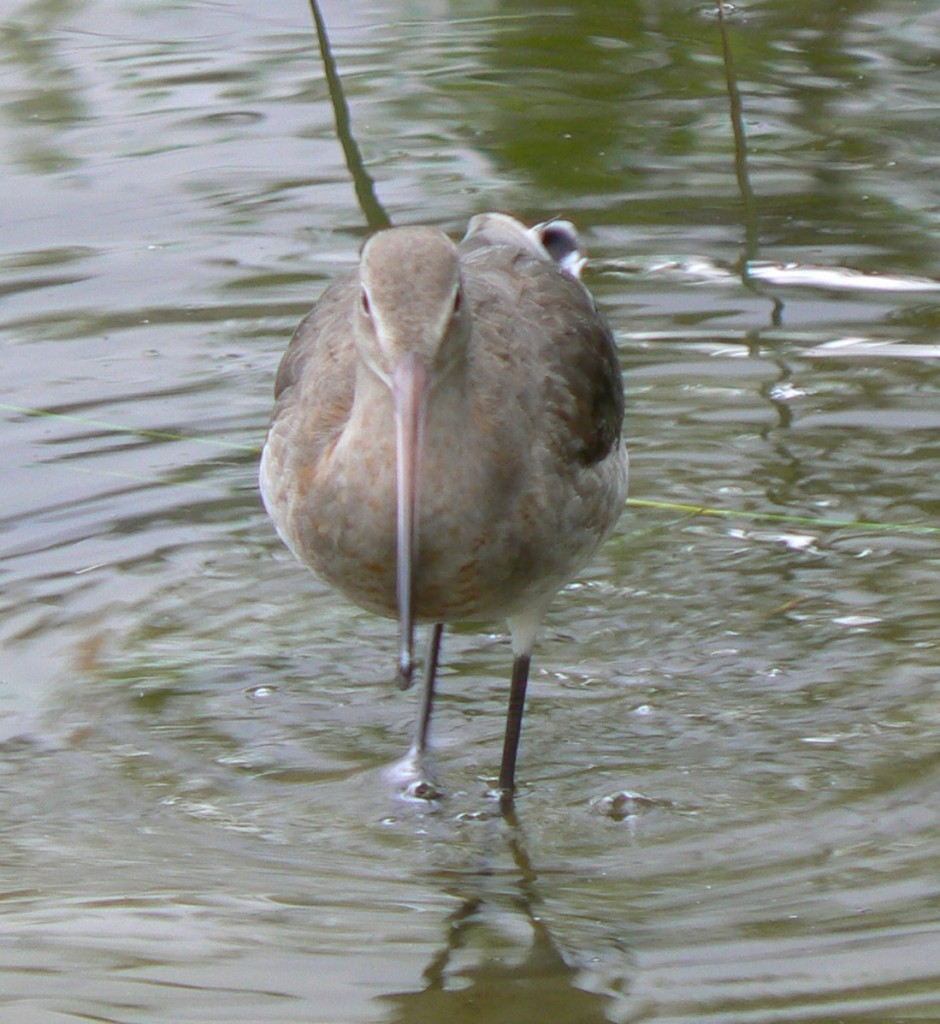
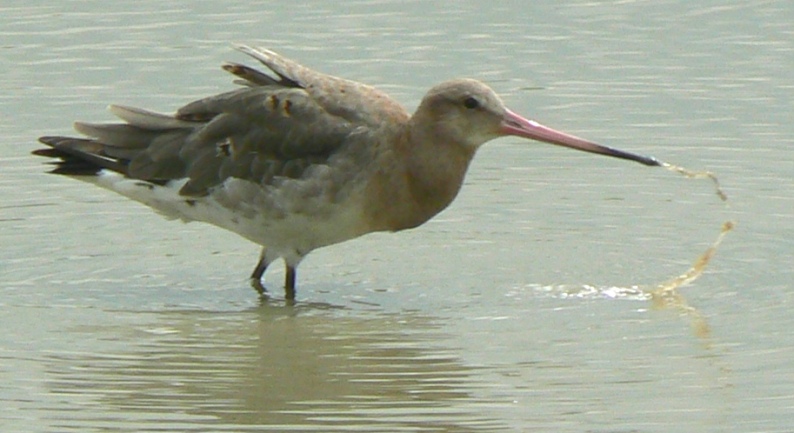

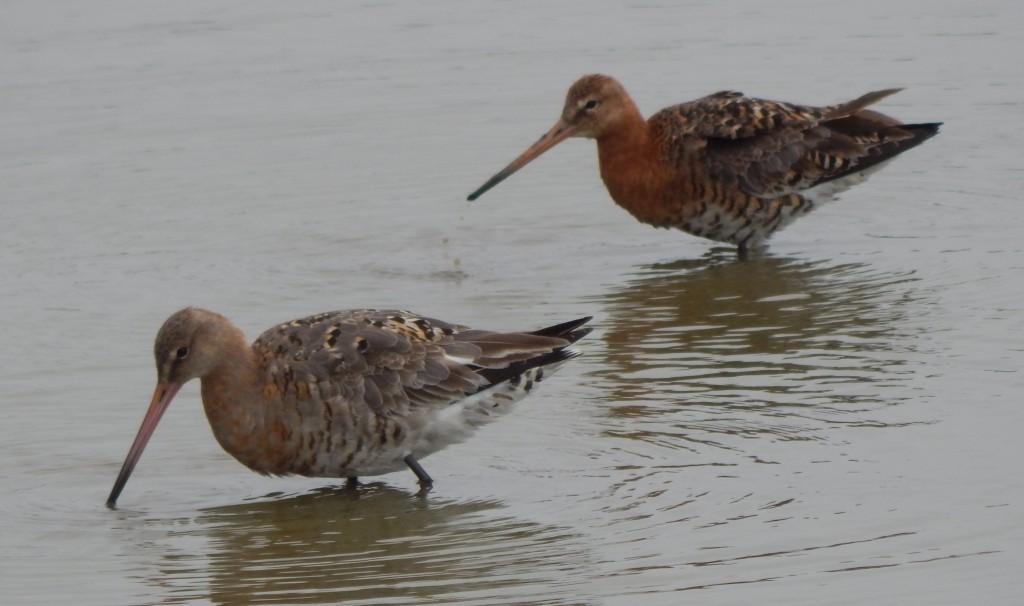
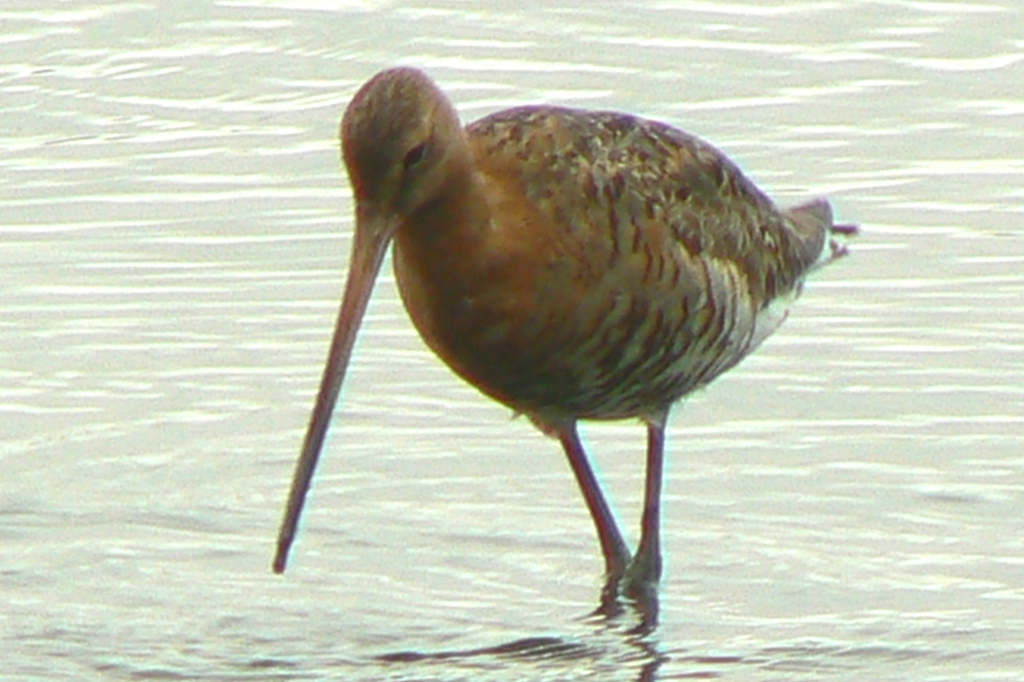
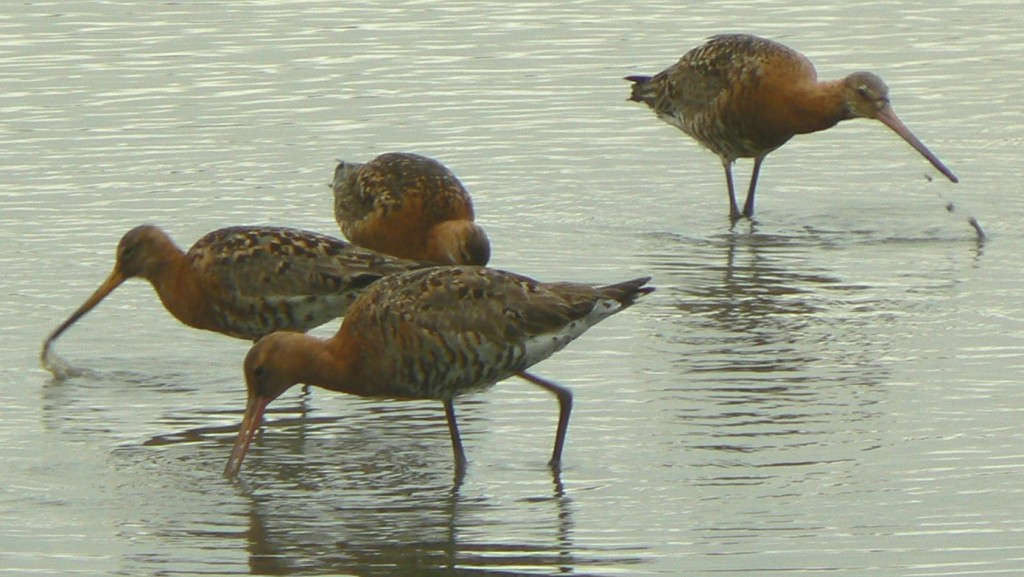
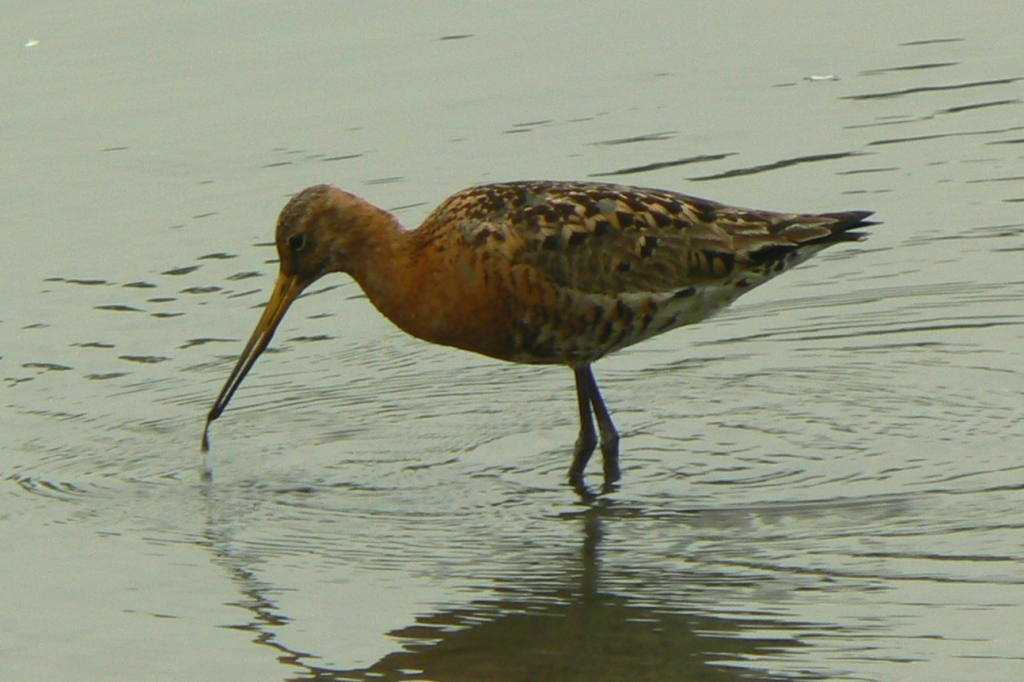

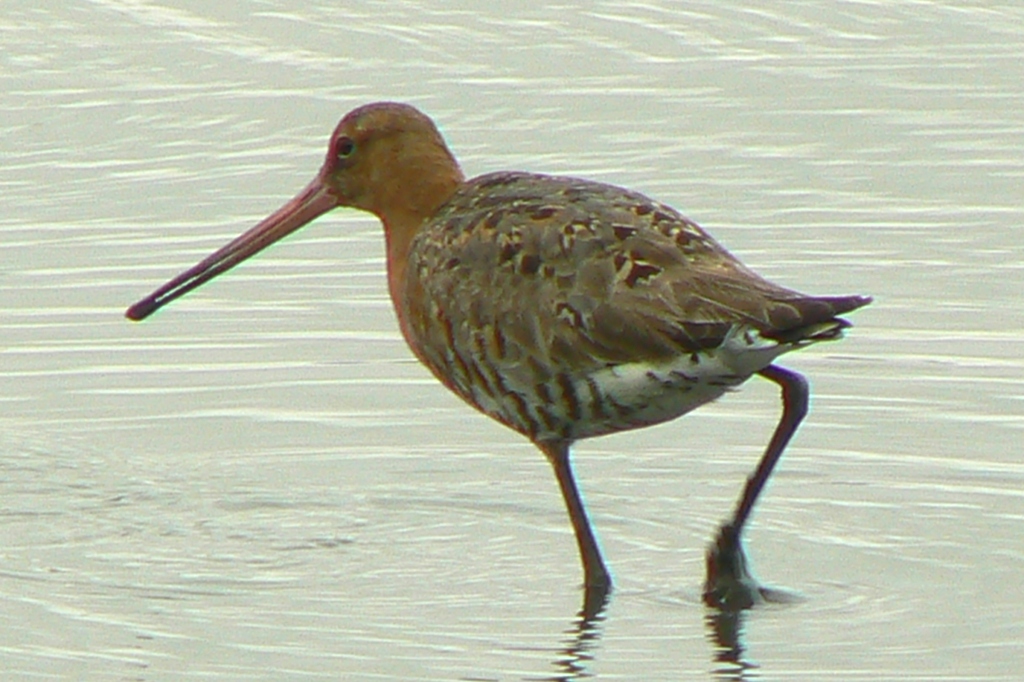

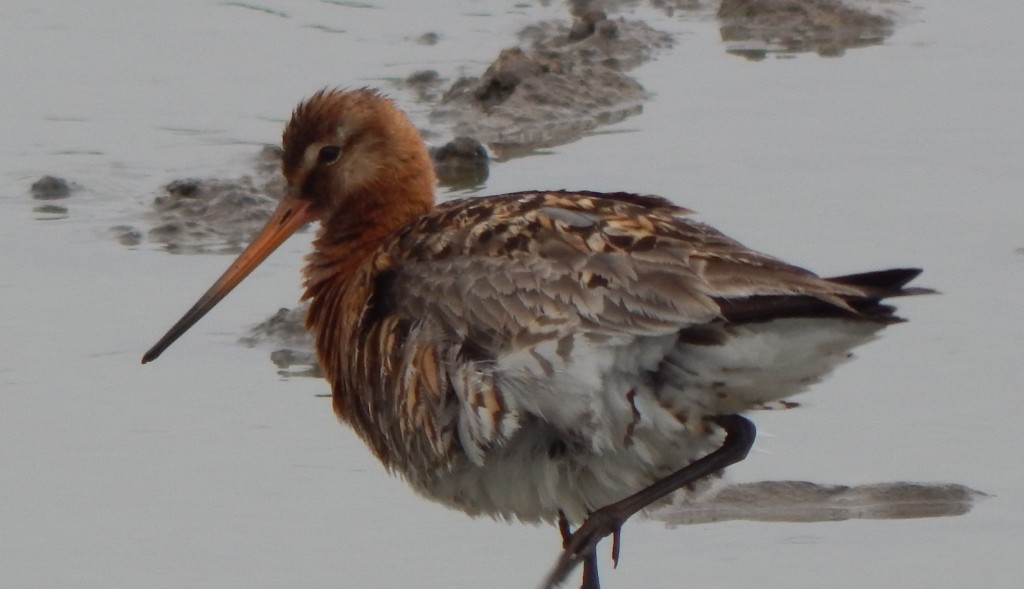
As you can see in some of these pictures you sometimes see birds together in winter and summer plumage. This is quite common for many species of birds.
They feed mostly on invertebrates and tend to spend most of their time wading in shallow water and pecking repeatedly with their heads underwater.
Habitat and use
Limosa limosa breeds in Iceland and across Europe to central Asia. It winters as far south as central Africa, India, Indonesia and Australia. In southern England it can be seen all-year round as a passage migrant.
Like many birds they were eaten a few hundred years ago in Britain.
Other Notes
I see these birds almost every time I visit Slimbridge, almost always in a flock either busy pecking for food or asleep.
Because of their rapid feeding methods, they can be very difficult to photograph. If you have a camera with a fast repeat, it’s best to take dozens of pictures. You may get lucky and catch one with its head out of the water. If you catch them resting (on one leg) the head is probably hidden.
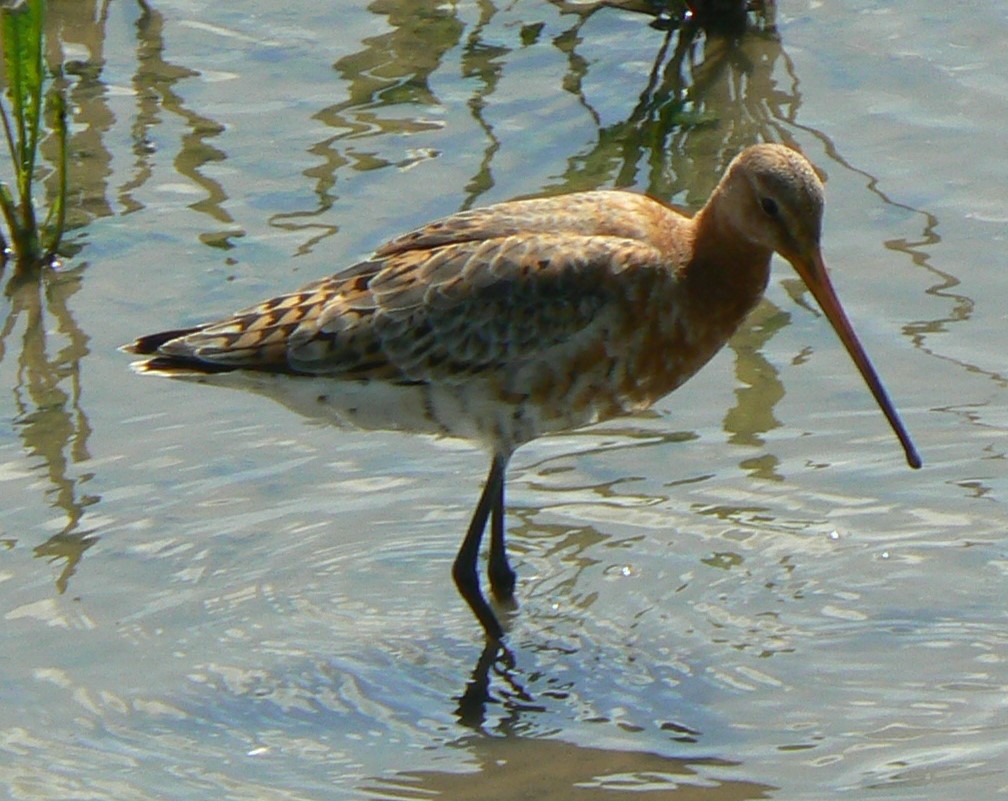
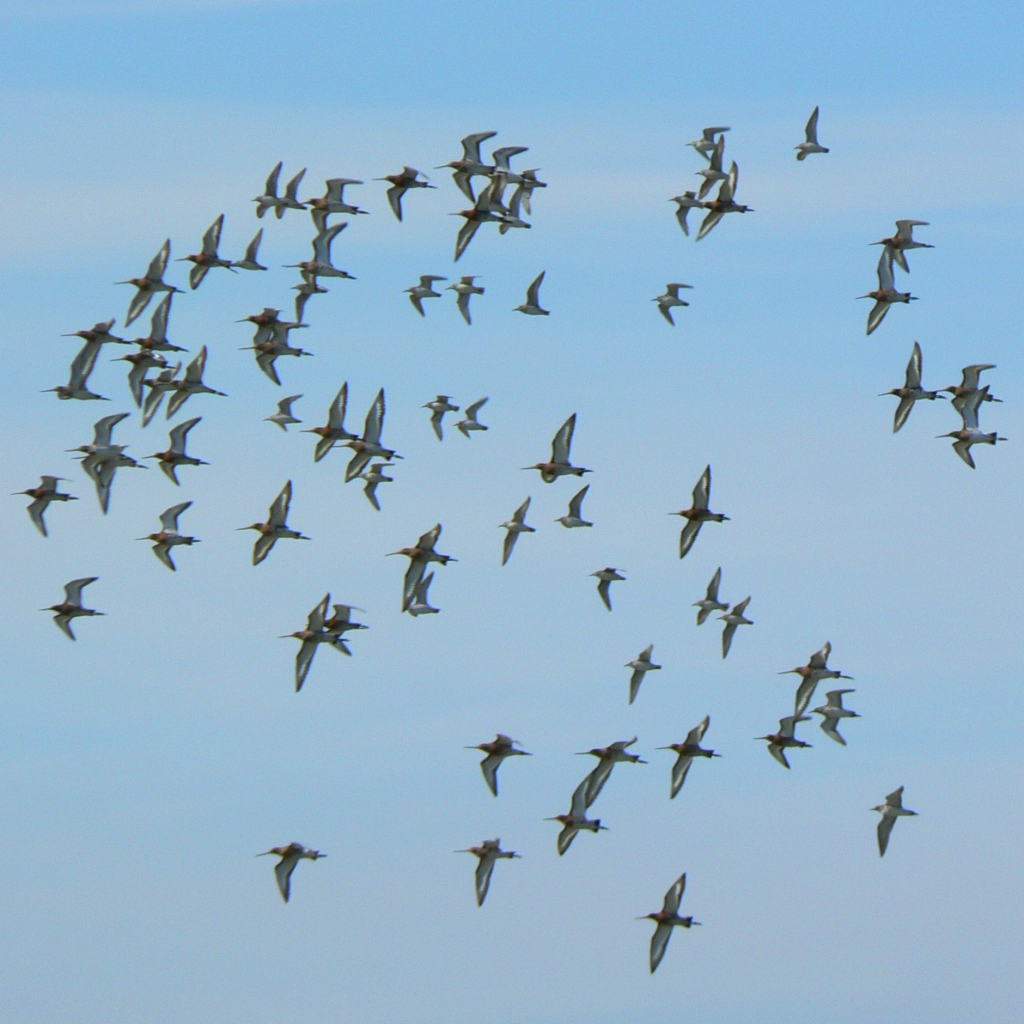
See also
Limosa lapponica, the Bar-tailed Godwit, is a much less common bird generally only seen very near to the coast. It is found in summer in Lapland and the Arctic regions of Eurasia and Alaska, wintering on the coasts of Oceania, Southern Asia and Africa. (Lapponnicus is Modern Latin, meaning from Lapland.)
Apart from the fact that it is normally solitary when Limosa limosa is gregarious, there are some fairly easy distinguishing features that don’t include looking at their tails! The bill length and curvature, and the length of the legs are slightly different. The plumage patterns are different but not as different as the annual variation between summer and winter forms.
There are several other wading birds that we have met or will come later. You may also see Numenius arquata, the (Common) Curlew – and its slightly smaller and much rarer relative Numenius phaeopus, the Whimbrel – both larger than the Godwits with definitely down-curved bills. I see groups of Curlew fairly often at wetland sites or in farmland nearby but they don’t generally come near enough for good pictures.
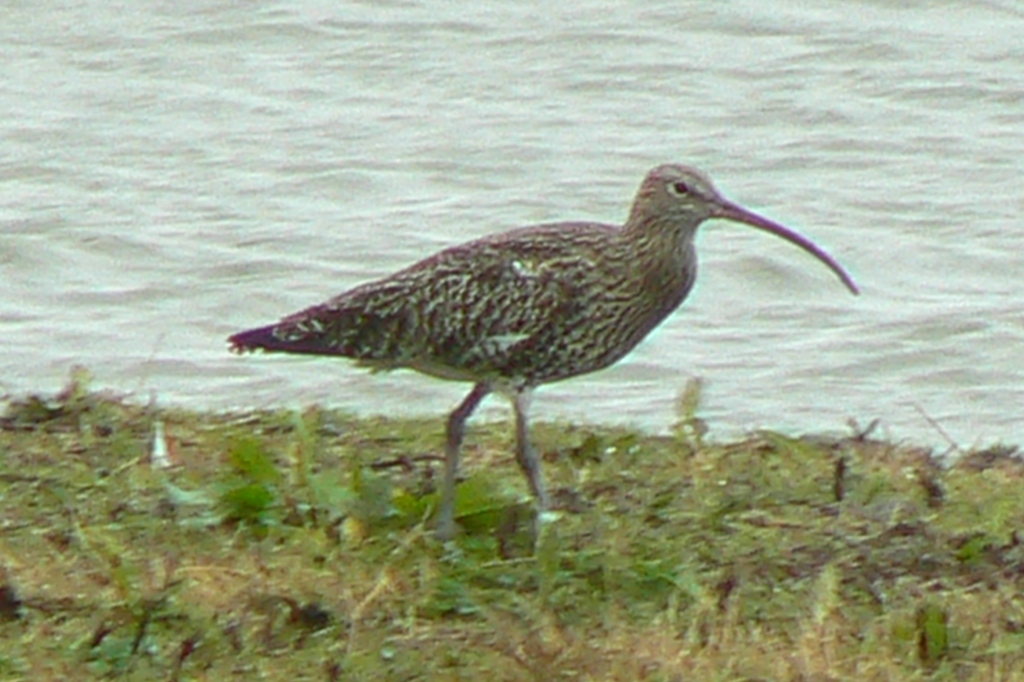


While the common name curlew is derived obviously from its call, its scientific name shows the typical deviousness of those who had the problem of coming up with original names. In the Sixth Century AD the Ancient Greek historian Hesychius mentioned an unknown bird called noumenios, a word that may be derived from neos-mene meaning new moon, so the word became the name of the Curlew with its crescent shaped bill. Its species epithet arquatus is Modern Latin derived from arcuatus ‘bow-shaped’ so the poor bird is now stuck with a name meaning “crescent moon shaped, bow shaped!”
